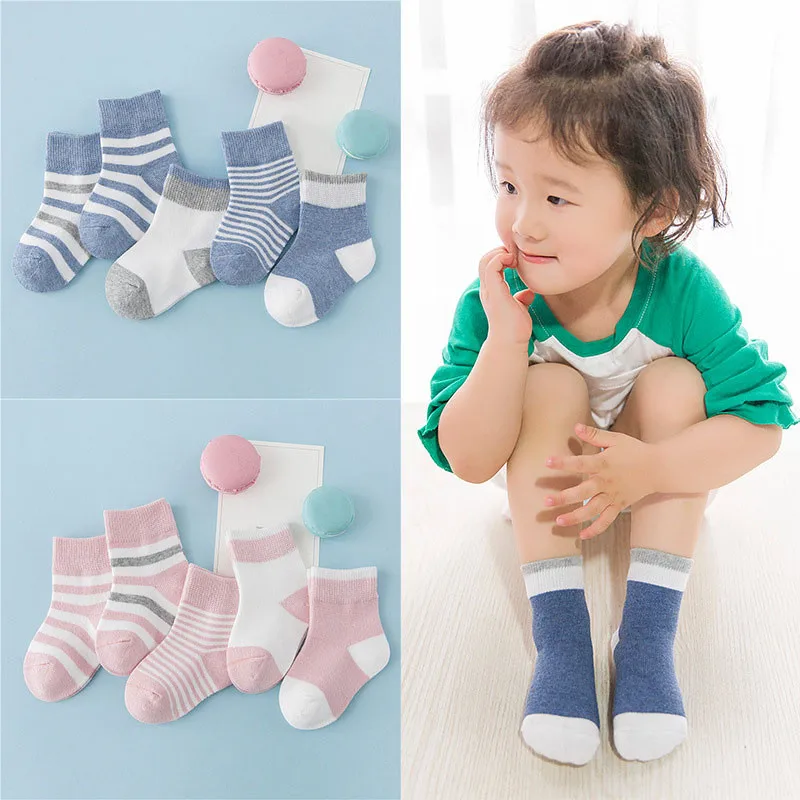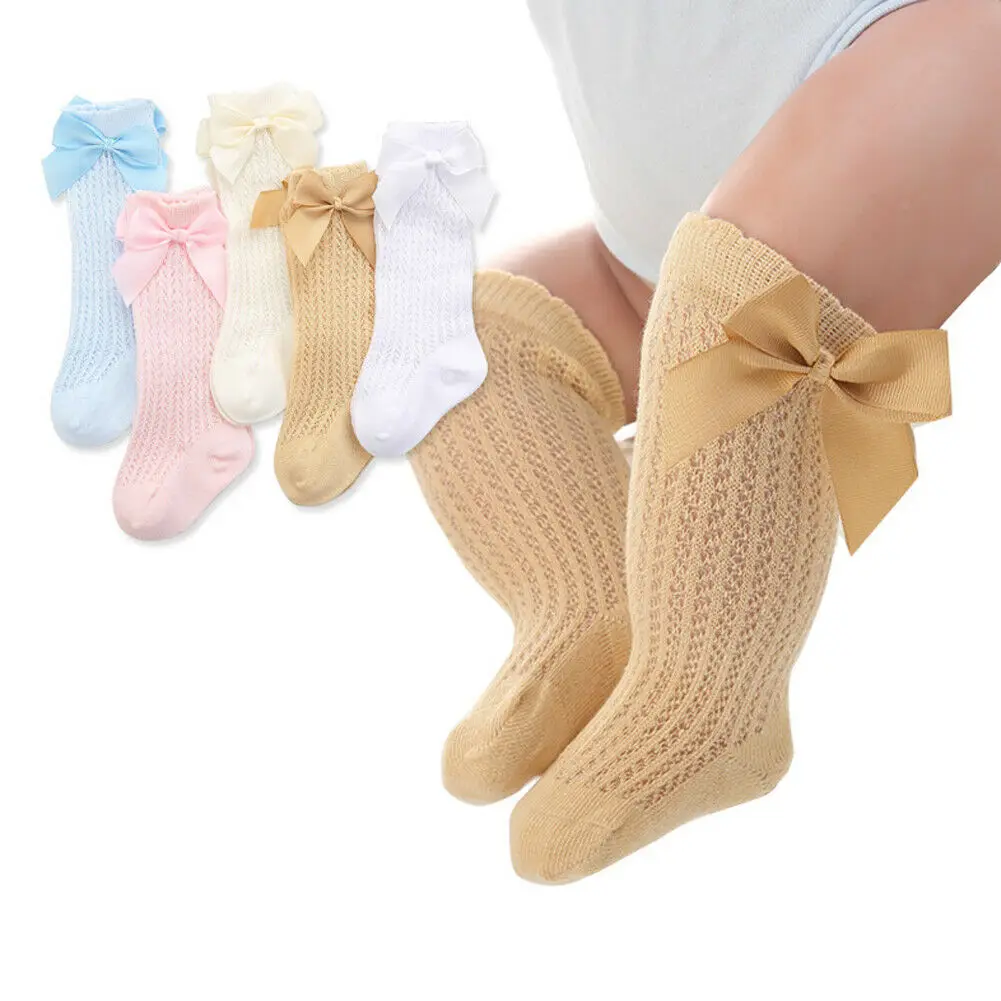
When it comes to shopping for baby socks, there are several factors that parents should take into consideration. Baby socks are not just a necessity for keeping your child’s feet warm and protected; they can also be a stylish addition to their outfit. In this article, we will explore three important factors to consider when purchasing baby socks: the material, the fit, and the style.
Material:
The material of the baby sock is one of the most important factors to consider. Babies have sensitive skin, so it is crucial to choose socks made from soft and breathable materials. Organic cotton is a popular choice for baby socks as it is hypoallergenic and gentle on the skin. Another option is bamboo fabric, which is known for its antibacterial properties and moisture-wicking abilities. Synthetic materials should be avoided as they can cause discomfort and irritation.
Fit:
The fit of the baby sock is another crucial factor to consider. Socks that are too tight can restrict circulation and cause discomfort, while socks that are too loose may slip off easily. It is important to measure your baby’s feet and choose socks that correspond to their size. Some socks come with elastic bands or adjustable straps to ensure a snug fit. Additionally, consider buying socks with non-slip soles to prevent your little one from slipping and getting injured while they are learning to walk.
Style:
While not as crucial as material and fit, the style of the baby sock is still an important factor to consider. There are endless options when it comes to baby sock styles, from basic solid colors to cute patterns and novelty designs. Keep in mind the season and occasion when choosing the style of the sock. For colder months, opt for socks with thicker construction to keep your baby’s feet warm. For warmer seasons, look for lighter options that provide breathability. Remember, baby socks are not just functional, but also add a touch of cuteness to your child’s outfit.
In conclusion, when shopping for baby socks, it is important to consider the material, fit, and style. The material should be soft and breathable to keep your baby’s feet comfortable and free from irritation. The socks should fit well and have non-slip soles to ensure safety. Lastly, choose a style that suits the season and adds an adorable touch to your child’s outfit. By considering these factors, you’ll be sure to find the perfect socks for your little one.
Contents
Key Factors for Choosing Baby Socks

When it comes to buying baby socks, there are several important factors that you need to consider. Here are three key factors that can help guide your decision:
- Fit: Babies grow quickly, so it’s important to choose socks that will fit them well. Look for socks that are labeled for the appropriate age range or size and double-check the sizing chart if available. Socks that are too loose may come off easily, while socks that are too tight can restrict circulation.
- Materials: The materials used in baby socks are crucial for the comfort and safety of your little one. Opt for socks made from soft and breathable fabrics such as cotton or organic materials. These materials will help keep your baby’s feet dry and prevent irritation or allergies.
- Construction: The construction of baby socks should be durable to withstand their active movements. Look for socks that have reinforced heels and toes to prevent wear and tear. Additionally, choose socks that are easy to put on and take off, as well as those that have non-slip soles to provide traction and reduce the risk of injury when your baby starts to crawl or walk.
By considering these key factors, you’ll be able to make the right choices when buying baby socks. Remember, the comfort and safety of your baby should always be your top priority!
Material and Fabric Quality
When it comes to buying baby socks, the material and fabric quality is a key factor to consider. Babies have delicate skin that is prone to irritation, so choosing the right material is important to ensure their comfort.
Synthetic materials like polyester or nylon may not be the best choice as they can cause sweating and discomfort, especially during hot summer months. Organic materials like cotton or bamboo are a better option as they are breathable, soft, and gentle on your baby’s skin.
Additionally, you’ll want to look for socks that have flat seams to prevent any irritation or damage to your baby’s sensitive skin. Socks with bulky or raised seams can rub against the skin and cause discomfort or even blisters.
Another important factor to consider is the sizing and construction of the socks. Babies grow quickly, so it’s essential to buy socks that fit them correctly. Some brands offer socks in different sizes, while others have stretchable fabrics that can accommodate growing feet.
Before making a purchase, it’s a good idea to check the sizing chart provided by the manufacturer. This will help you choose the correct size for your baby, ensuring a comfortable fit and preventing the socks from falling off or being too tight.
In conclusion, when buying baby socks, it’s crucial to consider the material and fabric quality, as well as the sizing and construction. Organic materials like cotton or bamboo are recommended for their breathability and softness. Additionally, socks with flat seams will help prevent any irritation or damage to your baby’s skin. By keeping these factors in mind, you’ll be able to make the perfect sock purchases for your little one!
Sock Size and Fit

When it comes to baby socks, sizing and fit are crucial factors to consider. Babies grow quickly, so it’s important to find the right size that provides a snug and comfortable fit.
There are several factors to keep in mind when determining the appropriate sock size for your little one. First, consider the age and weight of your child. Newborns will likely need smaller sizes, while older babies will require larger sizes.
Calf size is another important factor to consider. Some babies have chunkier calves, so finding socks with stretchy materials or adjustable features can help ensure a good fit. It’s also important to choose socks with flexible and non-constricting cuffs to avoid tightness and discomfort.
The type of shoes your baby will be wearing is another consideration. If you’re planning to have your child wear socks with shoes, make sure to choose socks that have non-slip soles for added traction and stability.
When shopping for baby socks, it’s a good idea to try them on your baby before making a purchase. This way, you can check if they’re too tight or too loose. Remember, a perfect fit should be snug but not overly tight, with no extra fabric gathering around the ankles.
One popular online store to consider is ZapZero. They offer a wide variety of baby socks in different sizes and styles. They also have a size chart and a helpful sock fitting guide on their website, making it easy to find the right size for your baby.
In conclusion, the sizing and fit of baby socks are crucial factors to consider when making a purchase. Taking into account your child’s age, weight, calf size, and the type of shoes they’ll be wearing will help ensure a comfortable and secure fit. Remember to try the socks on your baby before buying, and consider shopping at reputable stores like ZapZero that provide size charts and fitting guides.
Comfort and Support
When it comes to buying baby socks, comfort and support are two key factors to consider. Babies have delicate feet, and it is important to provide them with socks that are soft and gentle on their skin. Look for socks made from high-quality materials such as cotton or bamboo, as these materials are breathable and hypoallergenic.
Another important factor to consider is the fit of the socks. Socks that are too tight can restrict circulation and cause discomfort for your baby, while socks that are too loose may fall off easily. Look for socks that have a snug but not constricting fit, and consider buying socks with elastic bands to help keep them in place.
Support is also important when it comes to baby socks. Some socks have built-in arch support or extra padding on the bottom to provide cushioning and stability for your baby’s growing feet. These types of socks can be especially beneficial for babies who are learning to walk and need a little extra support.
Lastly, consider the construction of the socks. Look for socks with seamless toes, as this can help prevent irritation and blisters. Also, consider buying socks with reinforced heels and toes, as this can help prevent wear and tear and extend the lifespan of the socks.
Overall, comfort and support should be top priorities when buying baby socks. By considering these factors, you’ll be able to find socks that your baby will love wearing and that will keep their feet happy and healthy.
Cushioning and Padding

When it comes to buying baby socks, one important factor to consider is the level of cushioning and padding they provide. Babies have delicate and sensitive skin, so it’s crucial to choose socks that will keep their feet comfortable and protected.
Cushioning and padding in baby socks can help to prevent discomfort and irritation caused by friction or pressure. They provide an extra layer of softness and absorb impact, making walking and crawling more comfortable for little ones.
There are many different types of baby socks available on the market, with varying levels of cushioning and padding. Some socks may have thicker soles or additional padding in certain areas like the heels and toes. Others may have a double-layer construction for extra cushioning.
When shopping for baby socks, it’s important to consider your baby’s needs and preferences. Some babies may have sensitive skin and require socks with extra padding or cushioning, while others may feel more comfortable in thinner, lightweight socks.
Another factor to consider is the climate or season. In colder months, thicker socks with more cushioning may be a better option to keep your baby’s feet warm. In the summer, thinner socks made from breathable materials like organic cotton may be more suitable.
It’s also essential to choose the correct size of socks for your baby. Socks that are too tight can restrict blood circulation, while socks that are too loose may come off easily. Taking measurements of your baby’s feet can help you find the perfect fit.
When browsing for baby socks online, consider reading customer reviews and ratings to get an overall view of the quality and comfort of different brands and styles. You can also check for sizing information and guides provided by the retailer to ensure you’re choosing the correct size for your baby.
Keep in mind that babies grow quickly, so it’s always a good idea to buy a few extra pairs of socks. Having a backup will come in handy when the ones your baby is wearing eventually wear out or get lost.
In conclusion, cushioning and padding are important factors to consider when buying baby socks. By choosing the right level of cushioning, you can ensure that your baby’s feet stay comfortable and protected. Whether you’re looking for socks with extra padding for sensitive skin or lightweight socks for the summer, there are many options available. Take the time to research and double-check the details to find the perfect socks for your little one’s needs.
Seamless Toe Design
One important factor to consider when buying baby socks is the seamless toe design. Babies have delicate skin that is easily irritated by rough seams or stitches on their socks. A seamless toe design ensures that there are no irritating seams in the sock that could cause discomfort or skin damage.
When a baby wears socks with seams, the friction between the seams and the baby’s skin can lead to blisters, sores, or rashes. This can be especially problematic for newborns, as their skin is still very sensitive and prone to irritation. Hence, it is necessary to keep in mind the seamless toe design when buying baby socks.
Not only is a seamless toe design important for the comfort of the baby, but it also makes it easier for parents to put the socks on correctly. The absence of seams means that there is no specific place where the sock needs to be positioned, so it can be worn in any direction. This is especially helpful when you’re in a hurry or in the middle of the night.
Another advantage of seamless toe design is that it prevents the socks from falling down or slipping off. The absence of seams reduces the chances of the sock getting caught on something or getting loose. This ensures that the baby’s feet and calf remain covered and protected at all times. Remember, keeping the baby’s feet warm is important, even during the warmer months of spring and summer.
When searching for baby socks with a seamless toe design, it is recommended to look for reputable brands or suppliers that specialize in baby clothing. These brands are more likely to offer socks specifically designed with the baby’s comfort and safety in mind. In addition, they may use high-quality organic or synthetic materials that are soft, breathable, and gentle on the baby’s skin.
| ABC Socks | SocksFox |
| Organic materials | Synthetic materials |
| Comfortable and breathable | Soft and gentle on skin |
| Seamless toe design | Seamless toe design |
In conclusion, the seamless toe design is an important factor to consider when buying baby socks. It ensures the baby’s comfort, reduces the risk of injury or skin damage, and helps keep the socks in place. By choosing socks with a seamless toe design, parents can provide their babies with the best possible footwear for their delicate feet.
Durability and Longevity
When it comes to choosing baby socks, durability and longevity should be a top priority. Babies grow quickly, and their little feet are constantly moving and kicking. That’s why it’s essential to buy socks that can withstand the wear and tear of daily use.
One factor to consider is the quality of the sock construction. Look for socks made with fine materials and reinforced sections, such as double stitching and reinforced toes. These features will help prevent the socks from quickly wearing out and developing holes.
Size is another important factor. Babies come in various sizes, so it’s crucial to find socks that fit properly. Too tight socks can be uncomfortable for little ones, while too loose socks may easily slip off. Check the sizing chart provided by the brand to ensure a proper fit. Some brands, like SocksFox and Organic Kids, offer additional sizing measurements to help you make the best choice.
Another option to consider is purchasing organic socks. Organic socks are made from natural, chemical-free materials, making them safer for your baby’s delicate skin and environmentally friendly. Brands like ABC Organic and ZapZero offer a wide range of organic baby socks with cute designs that parents will love.
When shopping for baby socks, it’s also a good idea to read customer reviews and view the brand’s lookbook or image gallery. This will give you a better idea of how the socks look on babies and the overall quality of the products.
In summary, choosing durable and long-lasting baby socks is essential. Look for quality constructions, proper sizing, and consider organic options to ensure your baby stays comfortable and stylish while wearing socks.
Reinforced Heel and Toe

When it comes to buying baby socks, one important factor to consider is the quality of the sock’s construction. Babies are constantly moving their feet and toes, so it’s essential to choose socks that can withstand their active little feet.
A reinforced heel and toe are key features to look for when buying baby socks. These reinforced areas provide extra durability and support, ensuring that the socks won’t easily wear out or develop holes.
Reinforced heels and toes can help prevent injuries such as blisters or chafing, as well as provide added comfort for your baby’s feet. Babies often kick their feet against surfaces, so having socks with reinforced areas can protect their delicate skin.
Furthermore, reinforced heels and toes can also help with the fit of the socks. They prevent the sock from slipping or bunching up, ensuring that it stays in place while your baby moves around. This is especially important for newborns who are still learning to control their movements.
When buying baby socks, double-check the product description or packaging for information on whether the socks have reinforced heels and toes. If there is no confirmation, it’s best to reach out to the customer service of the online shop or visit a local store to ask for more details.
Remember that the quality of baby socks depends on their construction and materials used. Buying from reputable brands or shops is a good way to ensure that you’re purchasing socks that contain reinforced heels and toes.
In conclusion, considering the reinforced heel and toe factor when buying baby socks is crucial for the comfort and safety of your baby’s feet. It helps to prevent injuries, keeps the sock in place, and ensures their durability. So, don’t forget to pay attention to this important detail when making your sock purchases!
